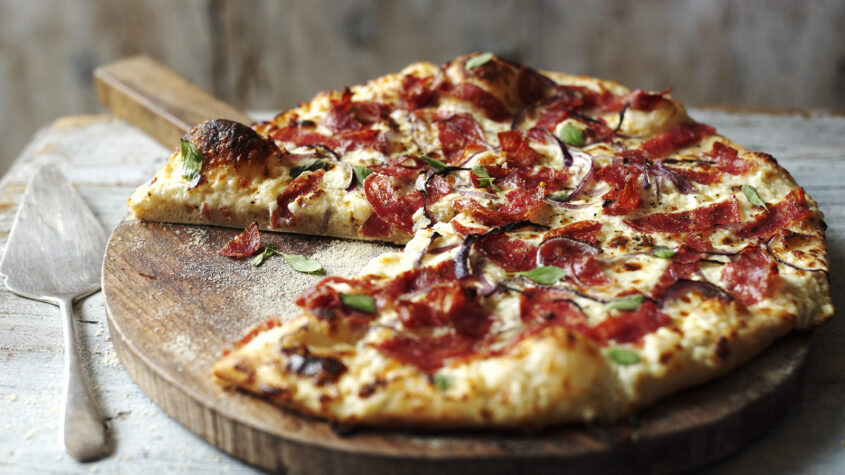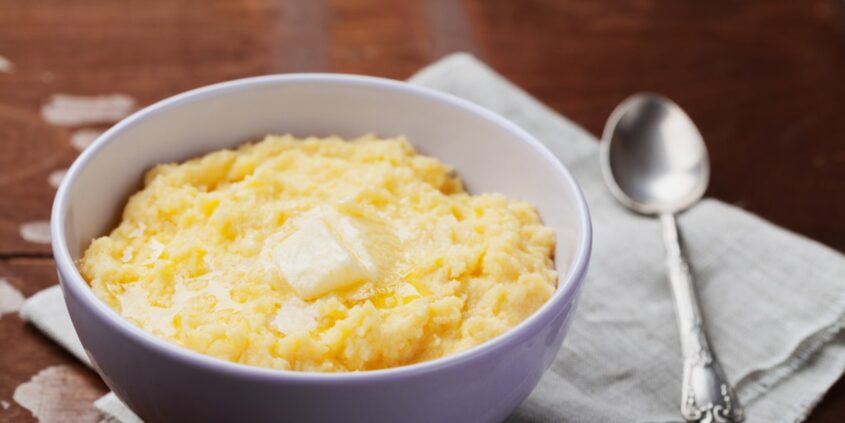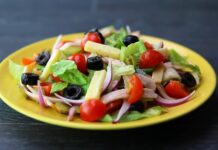
1. Pizza

There are two types of pizzas in Italy today. Neapolitan-style pizza has a thick and fluffy crust. It is smaller in diameter and more filling. Roman-style pizza has a paper-thin crust and a slight crunch. It is larger in diameter and much lighter. The general rule in Italy is the fewer toppings, the better. Pizzerias that add many toppings often use this tactic to mask poor ingredients. Fewer toppings is a sign of confidence and excellent quality. When in Rome, eat Roman-style pizza, and when in Naples, do as the Neapolitans do.
2. Bottarga

The short description is smoked eggs from the rat of the sea, but do not be put off by this. TheItalian delicacy is also known as the “Sicilian Caviar”. From August to September, southern Italians use roe from gray mullets. They salt it, press it, and leave it to air dry for approximately six months. The result is are solid amber and blood orange eggs. When sliced or grated over pasta, they blossom into a savory, smoky bouquet. Essentially, this is a way of preserving seafood, sued in the days before refrigeration. Now, it is one of the most sought after and luxurious treats in Italy.
3. Lasagna

The wide, flat pasta noodle, baked in layers in the oven is known far and wide. Like the rest of Italian dishes, the origins are debated. The region of Emilia-Romagna was where it transformed from a poor man’s food to a rich filled meal containing ragù (meat sauce). Before tomatoes arrived from the New World in the 16th century, they were not used in lasagnas. To make it, people used ragù, béchamel sauce, and cheese, usually mozzarella or Parmigiano Reggiano. Unlike Italian-American dishes that are swimming in tomato sauce, Italian lasagnas only contain a small amount of it.
4. Fiorentina Steak

The Florentine T-bone steak is a specific cut of meat from a specific cow, prepared in a very specific way in a specific region. Therefore, it checks out everything required for it to be a proper Italian dish. The steak is cut thick from the loin of a Chianina cow, raised in Tuscany. It is cooked between 5 and 7 minutes on each side. The outside has to be cooked, while the inside remains very rare. The meat is too thick to even attempt a medium-rare steak. It is a Tuscany exclusive, so try it in Florence or in the countryside. When ordering, it is priced by weight. For two people, you will need between 1 and 2 kg.
5. Ribollita

While we talk about Tuscany, this hearty soup has its roots in the peasant cooking of the famous Italian region. The vegetable soup used bread instead of meat, as it was much cheaper and more available to the poor Italian countryside centuries ago. This is a specialty in Tuscany, especially in autumn, when the freshly harvest vegetables make this soup rich in intense savoriness. This can be the first course instead of pasta in Florence, showing the often forgotten power of fresh produce.
6. Polenta

Surprisingly, until recently, polenta was eaten much more than pasta in the north. The corn mush nearly identical to that from southern American states originally made from whatever was handy, like acorns and buckwheat. When corn came to Europe in the 16thcentury, it becomes the dominant ingredient to make polenta. Despite lacking the shape and texture diversity of pasta, it perfectly accompanies meats and is one of the most comforting foods to eat when temperatures drop in Milan, Turin, and Venice. It is best as a mush, or packed and fried into wobbly fritters.
7. Ossobuco

Sssobuco alla Milanese is a bone-in veal shank. It is cooked low and slow until it becomes meltingly tender in a meat broth of stock, vegetables and white wine. Traditionally, it is served with gremolata (garlic, lemon zest, and parsley). The dish is not always common on restaurant menus because it takes around three hours to cook. If you manage to find it somewhere, go for it. It is served with either polenta or…
8. Risotto

Rice in Italy is often eaten in the form of creamy, luxurious risotto. Overall, Italians do not eat as much rice when compared to pasta and polenta, ironic since they are the largest producers of rice in Europe. Southern Italy is often referred to as the breadbasket of Italy, while Northern Italy, mainly Lombardy and Piedmont, are the rice bowl. The Arborio and Carneroli varieties are mixed with stock and stirred until they make a velvety semi-soup that. The most famous risotto is saffron-infused risotto alla Milanese. Other classic recipes include risotto al Nero di sepia, made with cuttlefish and ink, and risi e bisi, with pancetta and peas. They both come from Venice.
9. Carbonara

Everyone should try carbonara pasta in Italy. It is a simple dish, made from spaghetti, eggs, pecorino cheese, cured guanciale, and black pepper. However, it takes a lifetime to master. Imitations thicken the sauces with cream, or use bacon instead of guanciale, but do not settle for these, as they change the taste a lot. This Roman specialty has to be cooked the right way, and the taste will change your life. Ask locals for the best place to try it.
10. Truffles

This pungent and elusive fungus is one of the most expensive treats in the world. Italy is one of the lucky countries where they grow quite a lot in the wild. The forests and mountains of Umbria and Piedmont are explored using with dogs or pigs that can smell it underground. They come two forms, the rare and aromatic white truffles, or less aromatic and more common black truffles. Their aroma is otherworldly, although those who do not enjoy them compare it to gasoline of all things. Except for the two mentioned regions, Tuscany is another place to try them, especially in autumn. A fresh pasta, omelet or risotto covered in thin truffle shavings is the best way to start.
Important honorable mentions go to Italian bread (namely Focaccia), Italian coffee, Italian Gelato (ice cream), Tiramisu cake, digestive (alcoholic beverage with herbs and sugar), and of course, wine (both red and white).











